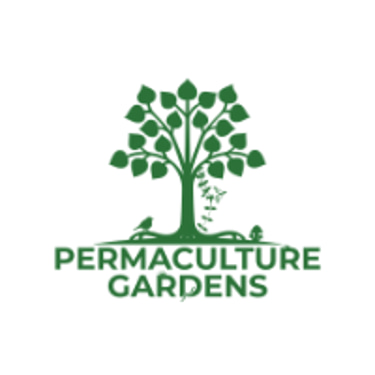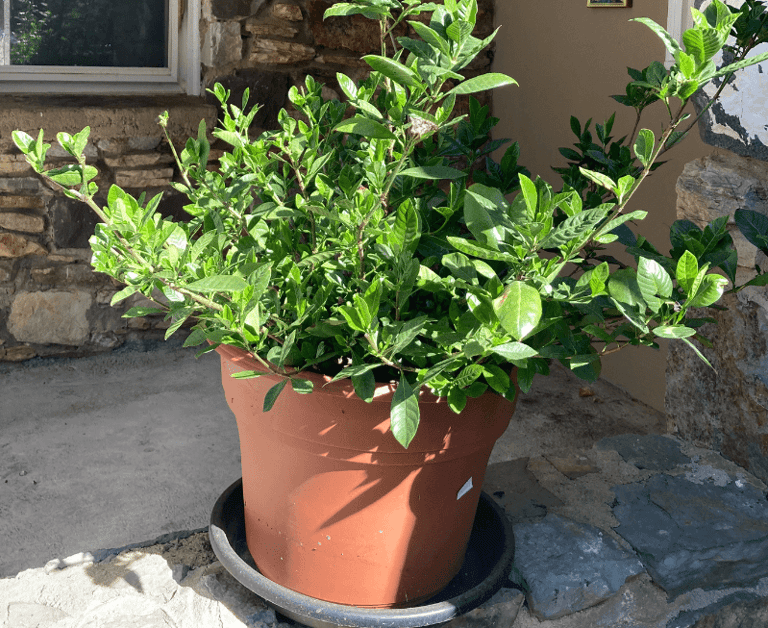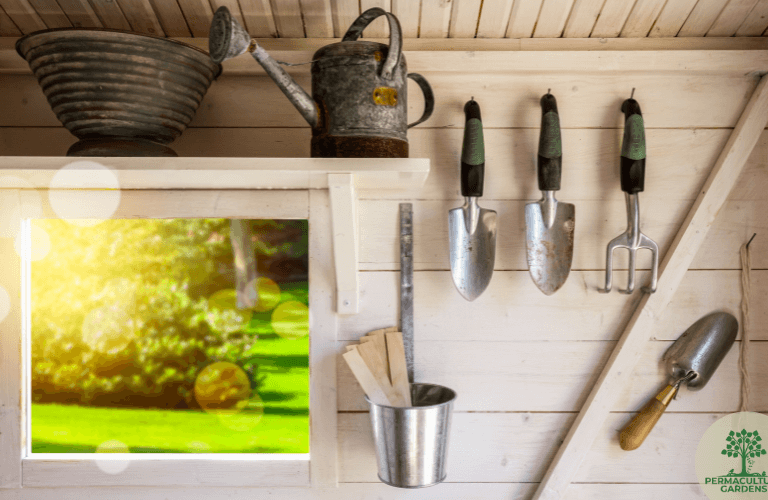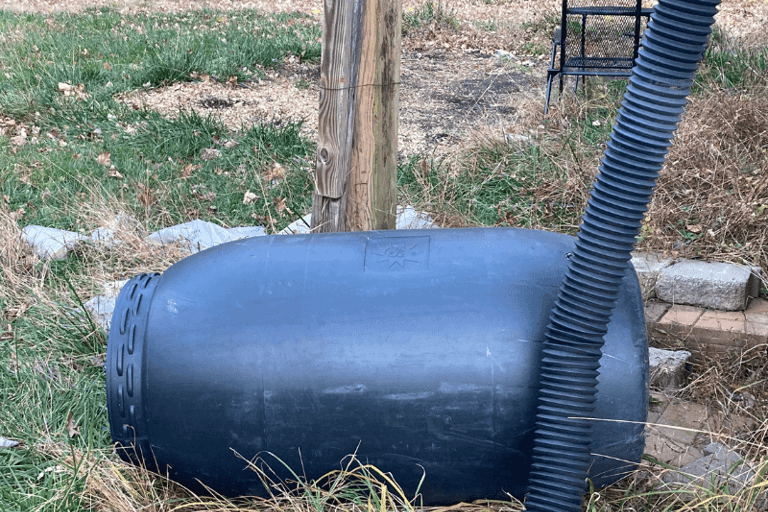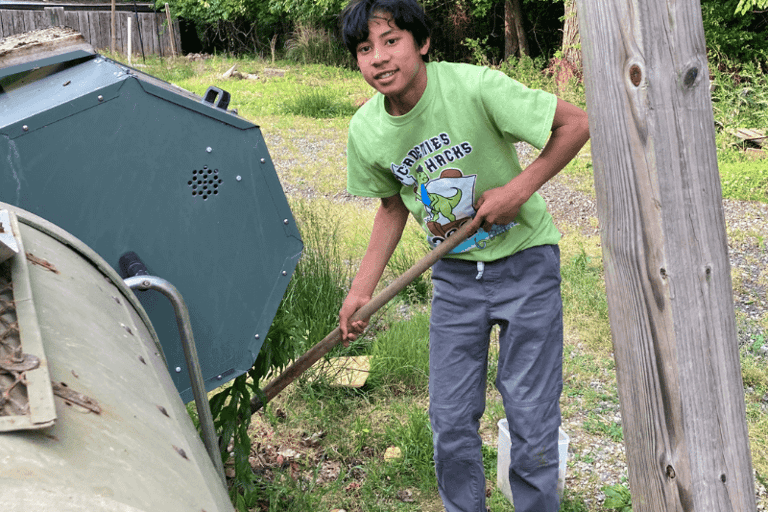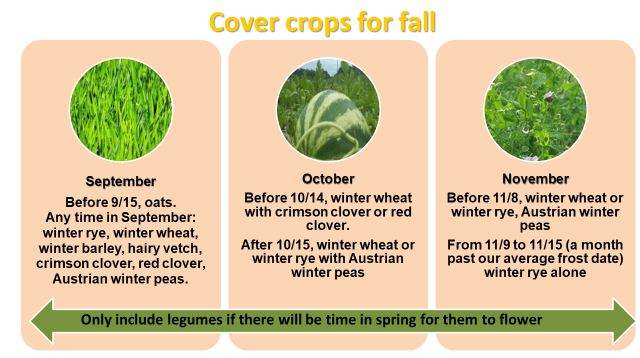Fall Garden Maintenance
Think of fall garden and yard maintenance as getting a head start on next season by cleaning, clearing, hydrating and fertilizing.
11/7/20238 min read
Fall Garden Maintance in 6 Easy Steps
Disclaimer
This [Blog Template] article may contain some affiliate links. The small commission we receive if you choose to purchase goes towards making this gardening education available for free! We do not affiliate for anything we do not personally use. Thanks so much for your support!

Fall Garden Maintenance
in 6 Simple Steps
There are several approaches to closing or maintaining a fall garden.
Ruth Stout's words rank first in "lazy gardening" methods out there. She encourages us to let nature take its course and break down the debris for us.
For those of us with Home Owner's Associations and neighbors whom we need to get along with, her advice, however, may not be an option. So we offer an alternative to Ruth Stout's fall garden maintenance in 6 easy steps:
Fall Garden Cleanup
Bring Plants Indoors
Care for Pots and Tools
Water
Compost
Amend the Soil
"It is October, and I trust your garden looks terrible,
with dead vines, corn stalks, clumsy cabbage roots - refuse - all over it.
And I do hope you will leave everything there, and add the kitchen garbage to it through the winter."
Ruth Stout, “Gardening Without Work: For the Aging, Busy and the Indolent.”
1. Fall Garden Cleanup
Fall Garden leaves
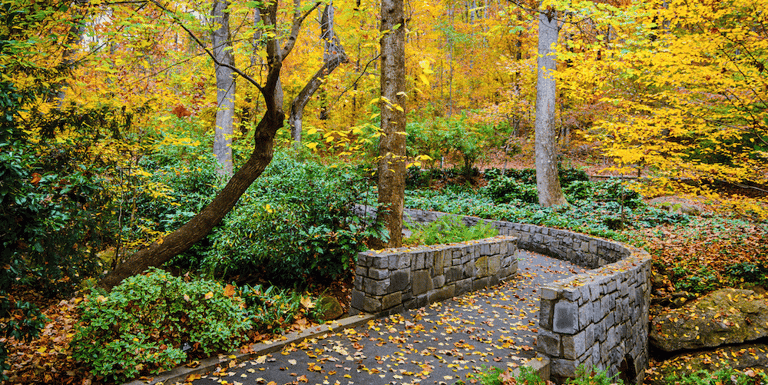

Yard Debris
Fall is an excellent time to "chop and drop" our overgrown (preferably, non-diseased plants) on our garden beds. Chopping them allows these twigs and leaves to decompose faster and acts as a mulch layer to feed the soil bed.
Fallen Leaves
Rake (or have your children rake) the fallen leaves in your yard (and your neighbors' yards as well) to create the main ingredients for a good compost pile. You may choose to add the leaves directly to your soil but note that they might blow off if not tamped down or run through a wood chipper or leaf shredder first.
If you can, chopping these leaves up into even finer pieces will allow them to incorporate faster into the soil and decompose within a few weeks. Decomposition, in this case, will take about three months in a rainy climate (40 inches/year or more) and will vary depending on the amount of rainfall in your area.
Speaking of rain, the best time to mulch your beds with leaves is right before a rain event. Taking note of your timing and allowing the rain to tamp down the leaves is one trick to keep the leaves from blowing away. At least right away. Another is to cover your soil with a tarp or painter's plastic (if you have one already handy). This cover acts as a blanket and warms that particular bed up.
If you raise the blanket using hoops, you get what is known as a "row cover." Row covers will warm the soil and allow you to extend your harvest into the fall.

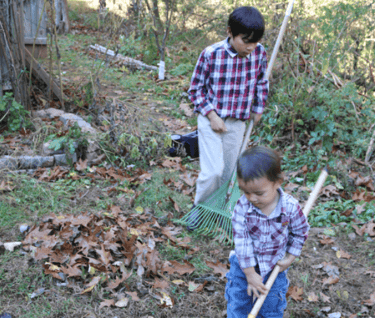
A gardenia plant to be taken indoors as the weather turns cold
What do you do to maintain your permaculture garden in the fall?
An easy way to keep the produce coming is to bring in whatever herbs, and veggies you can pot indoors. In this video, Dave is repotting and bringing in a baby banana plant to nurture inside the house during the cold season.
2. Bring Plants Indoors
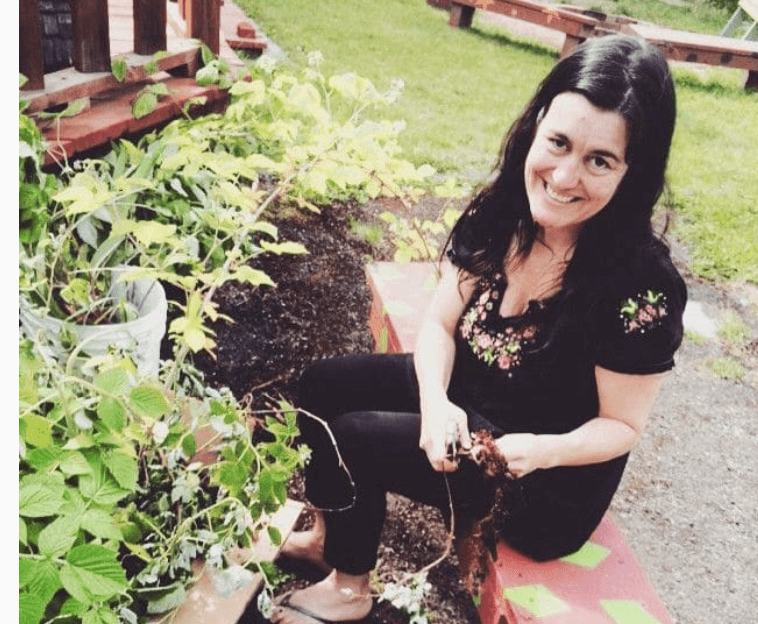

Heather Jo Flores, author of "Food Not Lawns, How to Turn Your Yard into a Garden and Your Neighborhood into a Community"
"In the fall I like to do a major garden clean-up, and not just with the plants--weeding, pruning, clearing out old debris from pathways and corners--to open the flow for new growth and new ideas.
I also clean out the greenhouse, tool shed, and even old files on my computer!
Summer is for enjoying and relaxing and eating the yummy stuff you started in Spring. Fall is for cleaning up the summer fun and reigning it all in before the weather hits.
And then, of course, as soon as the fall clean-up is done the next round of seeds go in the ground! Plenty to grow in winter, here in the Mediterranean (Spain), but I still like to embrace a serious full-system cleanout at the end of every summer."
Heather Jo Flores

Make time to maintain your hard-working tools.
3. Care for Pots and Tools
As Heather Jo Flores mentions above, fall is also the perfect time to protect and preserve our garden pots and tools. Remember to turn whatever pots you have upside down so that they do not collect water that freezes in the winter or breed mosquitoes while the weather is warm.
Clean and oil your pruning shears, spades, and garden tools now that the weather is turning and plant growth is slowing down. Doing this extends not only your future harvest but the "lifetime value" of your tools.
Often in first-world countries, we are so used to a "disposable culture" that we neglect to care for the things we currently have because we know we can buy them if they break. In third-world countries like the Philippines, industries are built around repairing damaged items for a good reason.
Caring for our tools costs us less in the long run and is better for the environment. It is also another form of stewardship.
A rain barrel emptied ot for the winter
For Dry Climates
Master Gardeners from Jefferson County in Colorado have this to say about watering during the fall.
"If you live in a dry climate with less than 20 inches of rainfall a year, you may need to water regularly even though there might not be so much growth during this time. Since water is such a scarce resource in the drylands, the best way to water would be to collect water into your garden beds passively."
Here's a video from Brad Lancaster, who waters his garden through passively collected water in Arizona's deserts.
2. Water
Brad Lancaster, author of Rainwater Harvesting for Drylands and Beyond

For Wet Climates
If you have a rain barrel, fall is the time to drain the rain from your barrel (into your garden). Detach it from your drainage spouts and block any way that water might passively accumulate in the barrel. Water that fills up a barrel in the wintertime will expand and crack the plastic and render it unusable when the weather warms up again.
You can do a lot of comnposting during the fall
Fall Composting
Composting is the most essential of fall gardening tasks. The plant waste and dead leaves you've raked up and any animal manure and other organic material you gather will make an excellent compost pile.
There are different schools of thought concerning how to apply compost to your garden soil. Many landscape experts recommend putting down a layer of compost first, then covering it with newspaper. This approach enriches the soil, while the paper blocks weeds but allows rain and moisture to get through.
5. Compost

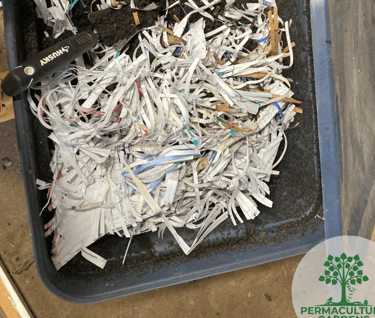
A compost bin covered in shredded school work
Image courtesy of Pam Dawling, author of "Sustainable Market Farming"
In the Northeast, amending the soil in the fall will encourage new growth when plants establish new roots again in the spring. It's also helpful to fertilize woody plants in late October or early November so that they can be protected from the frost under a blanket of mulch.
We recommend natural sources for boosting your soil's mineral profile. Why is that? Because the elements and minerals needed to revitalize soil should be in a bio-available form to the life that is already present underground.
Instead of purchasing a bag of NPK, we "fertilize" by growing leguminous "cover crops" such as crimson clover, hairy vetch, and Austrian winter peas.
Shop Cover Crops at True Leaf Market!
Below is a helpful infographic from Pam Dawling, a market farmer in Virginia who says "Only include legumes in the fall if there will be time in spring for them to flower."
6. Amend the Soil

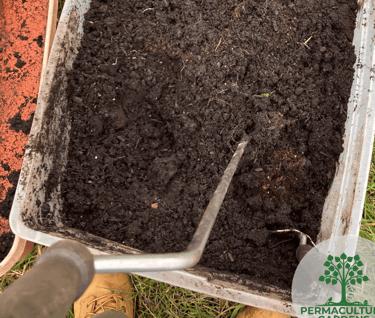
Using compost as fertilizer my garden soil.
Outsourcing Soil Fertilization
Plants cannot readily take up nitrogen commercial fertilizer preparations. They need the help of symbiotic bacteria most commonly found in legumes such as peas, beans, and the Fabaceae family members. These mostly legume plants that supply plant-soluble nitrogen are called "nitrogen fixers."
Other nitrogen-fixers include plants with a symbiotic relationship with Frankia bacteria, normally dicots, actinorhizal plants, and members of the Azospirillum species. These bacteria trade their nitrogen-fixing superpowers for starch that they get from hanging out among their host plants' root hairs.
In the early fall, we plant fava beans to do at least two things for us:
Give us fava beans to eat, and
Fix nitrogen back into our soil.
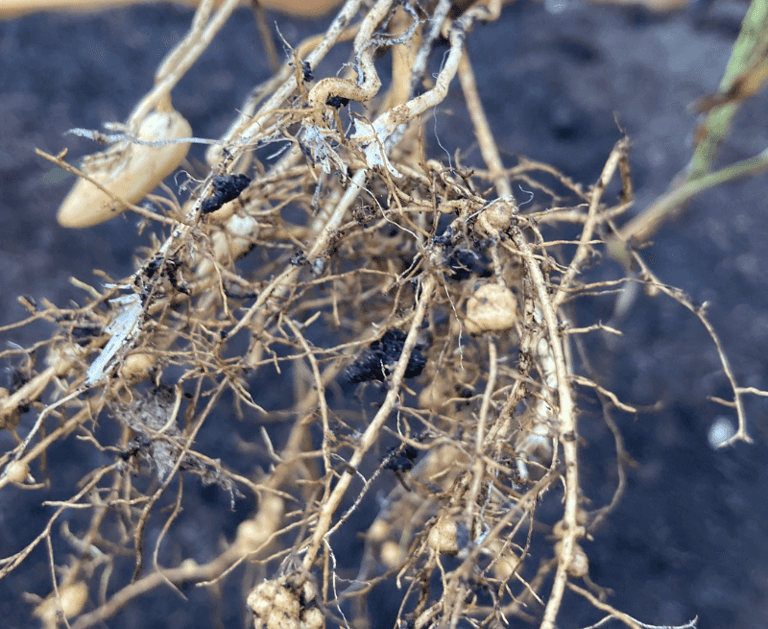

Peanut roots showing nodules of Nitrogen-fixing bacteria.
These bacteria help transform Nitrogen so that crops can use it!
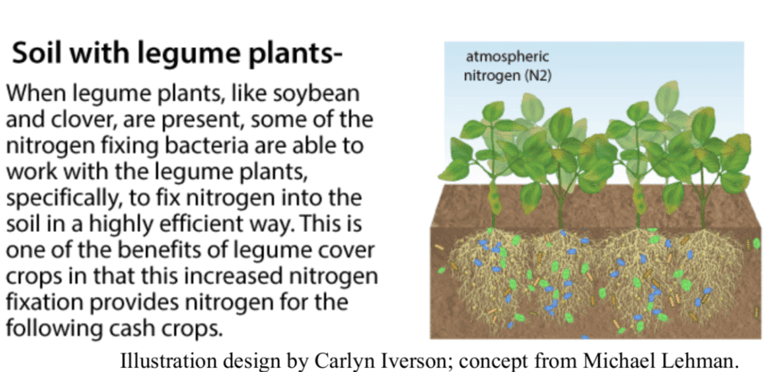

Courtesy or SARE (Sustainable Agricultural Research & Education)
We mentioned ways to increase nitrogen in the soil, but what about the P and the K?
Natural sources of P (Phosphorus) are palm-like leaves. If you live in the tropics, you're in luck! If you don't, banana peelings are your next best bet. And as for the K (Potassium)?
Our plants need so much more than NPK. To paraphrase permaculture designer Geoff Lawton:
"Only using NPK for your plants is like saying all you needed to survive was a burger, a bun, and fries."
We need so much more than NPK, and the "so much more" doesn't come store-bought.
If you've noticed via past readings, permaculture gardening is almost always "lazy gardening," whether it is your fall garden or year-round. Better said, it's "work-smart-not-hard gardening."
In theory, we should design our permaculture gardens with living mulch built into the system. This living mulch can be made up of "dynamic accumulators" that mine the soil, yes, for NPK as well as the soil's basic eight elements!
A Note on NPK & Fertilization
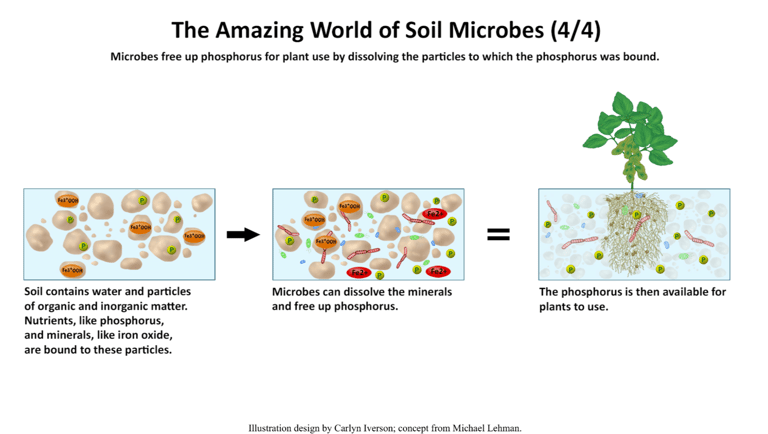

Courtesy or SARE (Sustainable Agricultural Research & Education)
What plants are dynamic accumulators?
Here are two lists of dynamic accumulators:
John Kitsteiner's Temperate Permaculture Dynamic Accumulator List
Dr. James Duke, (Ethnobotanist - USDA) Dynamic Accumulator and their Nutrient Uptake
Additionally, you can find a comprehensive list of sources for naturally occurring mineral amendments in author and permaculture teacher Amy Stross's book, "The Suburban Microfarm: Modern Solutions for Busy People"
The list includes amendments like fish hydrolysate, ash, and seaweed for soils lacking in specific nutrients.
Dig Deeper
Here is a simple Fall Garden Checklist you can print and use to help you maintain your garden this fall. There's a sample list of action items we do in our garden and a blank sheet for you to fill in with your own fall garden maintenance to-do's!
Fall Garden Checklist

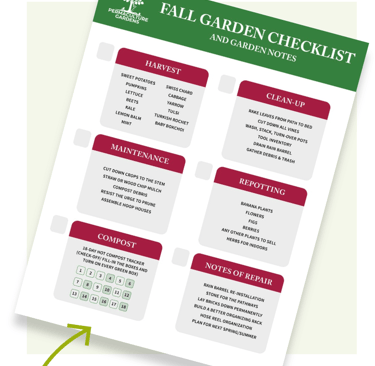
I WANT TO GROW MORE
Sign Up for a
Permaculture Garden Course
I AM A BEGINNER
I WANT MY DREAM GARDEN
Sign up for the
Grow-It-Yourself Program
Everything you need to start a garden
may be hidden in your pantry.
Take a self-paced, step-by-step garden course to help you grow right from seed to harvest.
Make Your Organic Food Garden A Reality with
a garden mentor
a community
an app &
a proven plan!



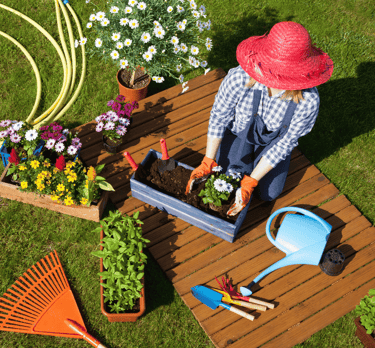


Choose one next step.
Which of the following are you?
Permaculture Gardens - your online resource for organic & sustainable gardens.
Contact
permaculturegardens@gmail.com
Bethany Farm
41558 Stumptown Rd.,
Leesburg, VA 20176
